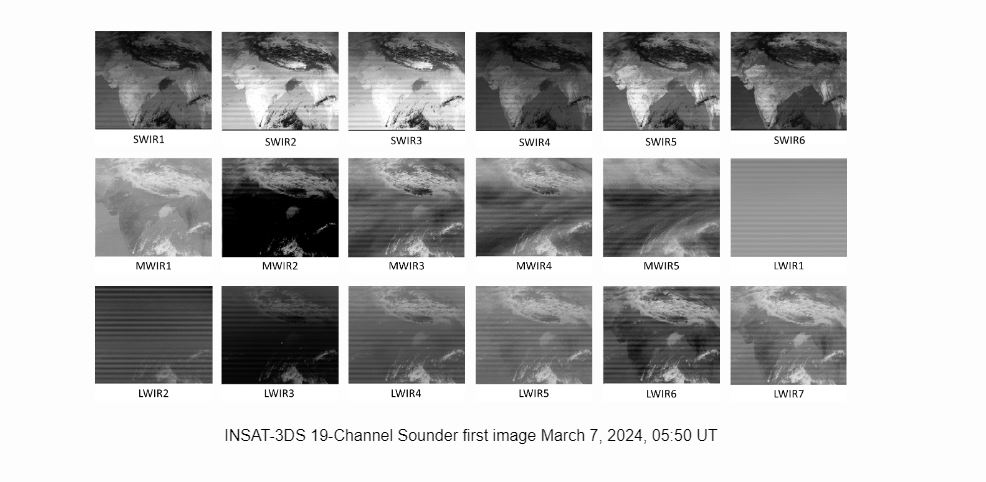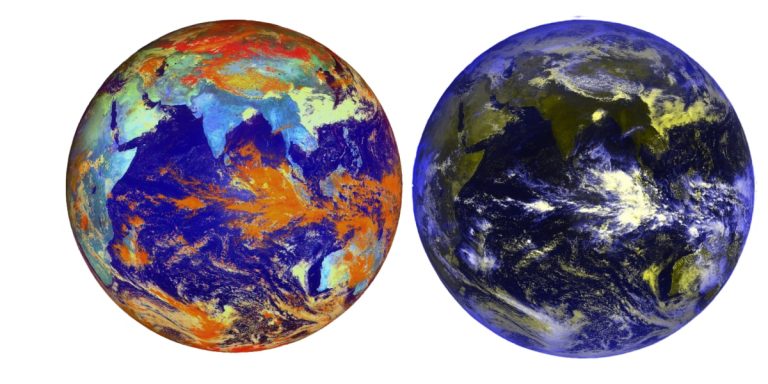Table of Contents
ToggleUnveiling the Marvels of ISRO’s INSAT-3DS Satellite: Revolutionizing Earth Imaging and Weather Forecasting
Introduction
In the realm of space exploration and satellite technology, the Indian Space Research Organisation (ISRO) has once again showcased its prowess with the successful initiation of Earth imaging operations by the INSAT-3DS satellite. This milestone marks a significant leap forward in India’s meteorological capabilities, promising enhanced weather monitoring and forecasting like never before.
Unveiling INSAT-3DS: A Marvel of Technological Innovation
Launch and Deployment
INSAT-3DS, India’s latest meteorological satellite, was launched on February 17, 2024, amidst much anticipation and excitement within the scientific community. Following a series of meticulously planned orbit-raising maneuvers, the satellite reached its designated geostationary slot on February 28, positioning itself to commence its vital mission.

Cutting-Edge Payloads
At the heart of INSAT-3DS’s capabilities lie its advanced meteorological payloads, which include a six-channel imager and a nineteen-channel sounder. These payloads represent a quantum leap in technology, boasting enhanced radiometric accuracy, black body calibration, thermal management, and imaging throughput.
The Power of Imaging: Peering Into Earth’s Mysteries
The six-channel imager serves as the eyes of INSAT-3DS, capturing stunning images of Earth’s surface and atmosphere across various spectral channels. This enables monitoring of crucial environmental indicators such as clouds, aerosols, land surface temperature, vegetation health, and water vapor distribution.
“The imagery captured by INSAT-3DS provides us with a unique perspective on Earth’s dynamic systems, empowering us to unravel the complexities of our planet’s climate and weather patterns.” – Dr. Priya Sharma, Lead Scientist, ISRO.
Decoding Atmospheric Secrets: The Role of the Sounder
Complementing the imager is the nineteen-channel sounder, which delves into the depths of Earth’s atmosphere, measuring radiation emitted by atmospheric constituents. By analyzing this data, scientists gain invaluable insights into temperature variations, atmospheric composition, and the vertical structure of the atmosphere.
Harnessing Data for Environmental Insights
Environmental Products Galore
The data collected by INSAT-3DS’s payloads are instrumental in generating over 40 geophysical data products. These include essential parameters such as sea surface temperature, rainfall estimates, land surface temperature, fog intensity, atmospheric motion vectors, and cloud properties.
Empowering Weather Forecasting and Climate Monitoring
The wealth of information provided by INSAT-3DS is not merely academic but holds profound practical implications. Enhanced weather forecasting accuracy, improved preparedness for extreme weather events, and a deeper understanding of atmospheric processes are just a few of the benefits derived from this trove of data.
“The insights gleaned from INSAT-3DS’s observations are indispensable for ensuring the safety and well-being of communities worldwide, particularly in the face of increasingly erratic weather patterns.” – Dr. Rajesh Kumar, Meteorologist.
Conclusion: A Glimpse Into the Future
As INSAT-3DS embarks on its mission to unravel the mysteries of Earth’s atmosphere, it heralds a new era in meteorological science. With its state-of-the-art technology and unparalleled capabilities, this satellite stands poised to revolutionize weather forecasting, climate monitoring, and environmental research on a global scale.
Frequently Asked Questions (FAQ) About INSAT-3DS Satellite
-
What is the purpose of INSAT-3DS satellite?
INSAT-3DS satellite is primarily designed for meteorological applications. Its purpose is to observe and monitor Earth’s atmosphere, weather patterns, and environmental changes. By capturing high-resolution images and measuring atmospheric parameters, INSAT-3DS plays a crucial role in weather forecasting, climate monitoring, and environmental research.
-
What is the resolution of the INSAT-3DS satellite?
INSAT-3DS satellite provides imagery with varying resolutions depending on the specific channels used. The spatial resolution of its imaging payload allows for the capture of detailed information about Earth’s surface and atmosphere. Specific resolution values may vary across different spectral bands and imaging modes.
-
What is the spatial resolution of INSAT?
The spatial resolution of INSAT-3DS refers to the level of detail that can be discerned in the images captured by its imaging payload. This resolution determines the clarity and sharpness of the images obtained. INSAT-3DS is equipped with advanced imaging technology that offers high spatial resolution, enabling precise monitoring of environmental phenomena such as clouds, vegetation, and atmospheric dynamics.
-
What is the full form of INSAT-3DR?
INSAT-3DR stands for Indian National Satellite System-3 Data Relay Satellite. It is a variant of the INSAT-3 series of satellites developed by the Indian Space Research Organisation (ISRO). INSAT-3DR is equipped with advanced meteorological payloads for observing Earth’s atmosphere and weather patterns, similar to INSAT-3DS. However, INSAT-3DR also incorporates data relay capabilities, enabling it to receive, process, and transmit data from other remote sensing satellites in orbit.

